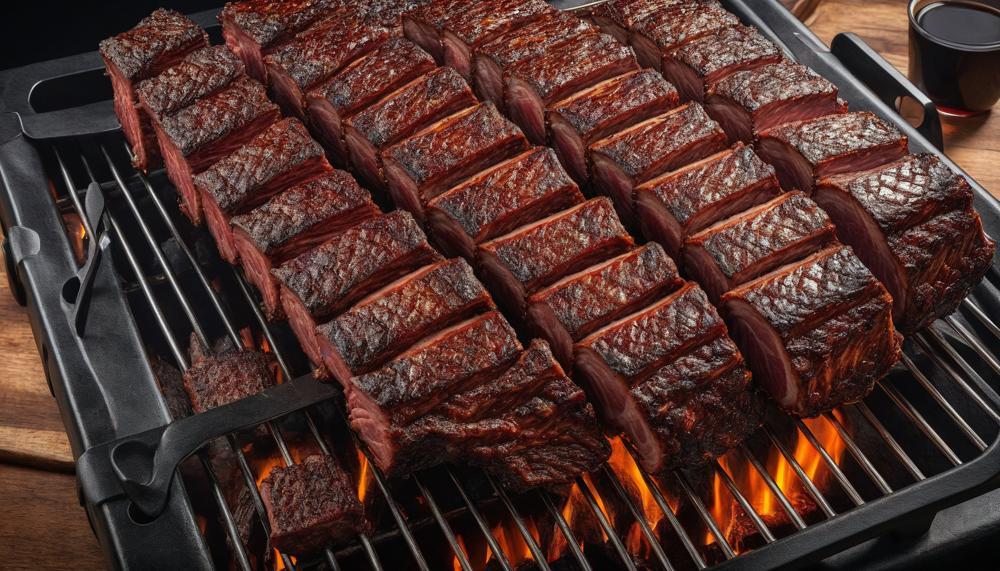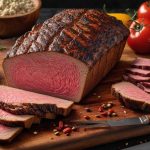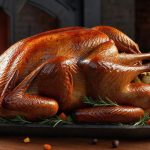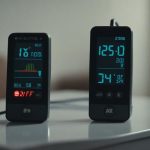Grilling with a Traeger grill is all about precision, flavor, and convenience. If you’re aiming to perfect your barbecue game, a remote probe thermometer is an essential tool. This gadget lets you monitor your meat’s temperature without lifting the lid, ensuring your food cooks to perfection every time.
Using a remote probe thermometer might sound tricky, but it’s actually straightforward and incredibly beneficial.
Key Takeaways:
- Precision Cooking: Achieve the exact doneness by monitoring internal temperatures without opening the grill.
- Convenience: Check temperatures from a distance, letting you entertain or relax while your Traeger does the work.
- Consistency: Avoid overcooking or undercooking by getting real-time temperature updates.
- Efficiency: Save time and maintain consistent grill temperature by reducing lid openings.
Ready to elevate your grilling skills? Here’s a quick guide on how to use a remote probe thermometer with your Traeger grill, ensuring each meal is a hit.
Contents [show]
How To Use Remote Probe Thermometer For Traeger?
Using a remote probe thermometer with a Traeger grill ensures you can precisely monitor the cooking temperature without constantly opening the grill. Here’s how to use it effectively:
Prepare the Thermometer
- Insert batteries into the remote probe thermometer as per the manufacturer’s instructions.
- Turn on both the transmitter and receiver units.
Insert the Probe
- Insert the temperature probe into the thickest part of the meat, avoiding bone and fat.
- Ensure the probe is securely connected to the transmitter unit.
Position the Transmitter
- Place the transmitter outside the grill but close enough to remain within range. Ensure it’s not too close to avoid heat damage.
Set the Desired Temperature
- Use the receiver to set the desired internal temperature for your meat. Refer to your recipe or general temperature guidelines for the type of meat you are grilling.
Monitor the Temperature
- Place the meat on the grill, ensuring the probe wire exits through the grill’s lid without crimping.
- Monitor the internal temperature from the receiver, which you can keep with you as you move around.
Adjust as Needed
- Once the desired temperature is reached, the receiver will alert you. Adjust the grill settings or remove the meat as necessary to avoid overcooking.
Post-Grilling Care
- After grilling, remove the probe carefully and clean it thoroughly according to the manufacturer’s instructions to ensure hygiene and longevity.
Common Issues and Solutions:
| Issue | Cause | Solution |
| Inaccurate Temperature Readings | Probe not inserted correctly | Reposition the probe to avoid bone and fat. |
| Signal Loss | Transmitter too far or obstacles in the way | Keep the transmitter closer and remove obstacles. |
| Probe Not Responding | Low battery or connection issue | Check batteries and secure connections. |
Using a remote probe thermometer with a Traeger grill not only simplifies the grilling process but also ensures perfectly cooked meat every time.
Understanding the Importance of Temperature Control in Grilling with a Traeger
Temperature control is pivotal when using a Traeger grill. Consistent temperature ensures your food is cooked evenly, retaining its flavour and juiciness. Uncontrolled fluctuations can lead to dry, overcooked meat or undercooked, unsafe food. Here’s how temperature control impacts the grilling process and the key factors to maintain it:
| Impact of Temperature Control | Description |
| Cooking Consistency | Maintaining a steady temperature ensures that food cooks evenly throughout, preventing burnt edges or raw centres. |
| Flavour Retention | Precise control helps preserve the natural juices and flavours of the food, enhancing the overall taste. |
| Texture Quality | Consistent heat prevents drying out, ensuring meats remain tender and moist. |
Key factors to consider for maintaining precise temperature control:
- Pellet Quality: The type and quality of pellets influence the grill’s heat output. Opt for high-quality pellets designed for Traeger grills to ensure a steady burn rate and consistent heat. For more on pellet quality, visit this Traeger Pellet Guide.
- Grill Settings: Familiarise yourself with the digital controls of your Traeger. Correct settings allow you to dial in specific temperatures, providing precise control over the cooking environment. Detailed instructions can be found in the Traeger User Manual.
- Weather Conditions: External factors like wind, humidity, and ambient temperature can affect your grill’s performance. On windy or cold days, you may need to adjust settings to maintain your desired temperature. For tips on grilling in various weather conditions, check out this weather impact guide.
- Proper Ventilation: Ensure your grill has adequate airflow to maintain consistent heat. Poor ventilation can cause uneven heating and fluctuating temperatures. Regularly check and clean vents to promote good air circulation.
- Monitoring Tools: Use remote probe thermometers for real-time temperature tracking without opening the grill, which helps maintain stable internal temperatures. Learn about the best thermometers in this thermometer review.
- Preheating: Always preheat your grill thoroughly before adding food. This stabilises the internal temperature, providing a consistent cooking environment from the start.
Step-by-Step Guide on Setting Up and Installing a Remote Probe Thermometer for Traeger
The key steps to properly set up and install a remote probe thermometer for Traeger grills are as follows:
| Step | Details | Insights |
| 1 | Understand the role of the Traeger Meat Probe in achieving precise cooking results by accurately measuring food’s internal temperature. | Accurate temperature monitoring ensures perfectly cooked food. |
| 2 | Calibrate the probe by inserting it into ice water to stabilize near 32°F (0°C). | Calibration enhances measurement accuracy. |
| 3 | Connect the probe securely to the grill and insert it properly into the meat being cooked. | Proper insertion prevents inaccurate readings. |
| 4 | Plug the probe into the designated port on your Traeger grill and adjust temperature settings accordingly. | Ensure the grill reads close to 32°F (0°C) for accurate calibration. |
| 5 | Verify accuracy by using a reliable food thermometer to cross-check readings in ice water. | Double-checking ensures precise measurements. |
| 6 | Follow calibration instructions in the Traeger manual or specific grill model guidelines. | Each model may have different calibration procedures. |
| 7 | Troubleshoot any calibration issues using provided tips to ensure the probe functions correctly. | Addressing issues promptly maintains accurate readings. |
| 8 | Refer to detailed setup instructions for specific grill models like Pro 22 or Tailgater pellet grills. | Model-specific guidance ensures proper installation. |
Using the Remote Probe Thermometer to Monitor Meat Temperature in Your Traeger Grill
To effectively use a remote probe thermometer with your Traeger grill, follow these steps:
- Preparation: Ensure your meat is seasoned and ready for grilling. Insert the probe into the thickest part of the meat, avoiding bones and fatty areas.
- Setting Up: Place the meat on the grill and connect the remote probe thermometer to both the meat and the Traeger grill according to the manufacturer’s instructions.
- Monitoring: Keep the remote monitor nearby to track the temperature without opening the grill, which helps maintain consistent heat levels.
- Alerts: Set temperature alerts on the remote monitor. This notifies you when the meat reaches your desired doneness, whether rare, medium, or well-done.
- Final Checks: Once the thermometer alerts you, verify the meat’s temperature manually with a meat thermometer for accuracy.
- Resting: Let the meat rest off the grill to redistribute juices evenly before slicing and serving.
These steps ensure your Traeger grill experience is not just about grilling but mastering precision for delicious, perfectly cooked meat. For more detailed instructions, refer to the manufacturer’s guide for your specific model.
Tips for Maintaining and Calibrating Your Remote Probe Thermometer for Traeger
To maintain and calibrate your remote probe thermometer for Traeger grills effectively, ensuring accurate temperature readings and safe cooking, follow these best practices:
Regular Inspection and Cleaning:
- Check your thermometer regularly for any signs of wear or dirt that could affect its accuracy.
- Clean the probe after each use to remove food residue. Use a damp cloth with mild soap and water, avoiding submerging the probe.
Calibration Process:
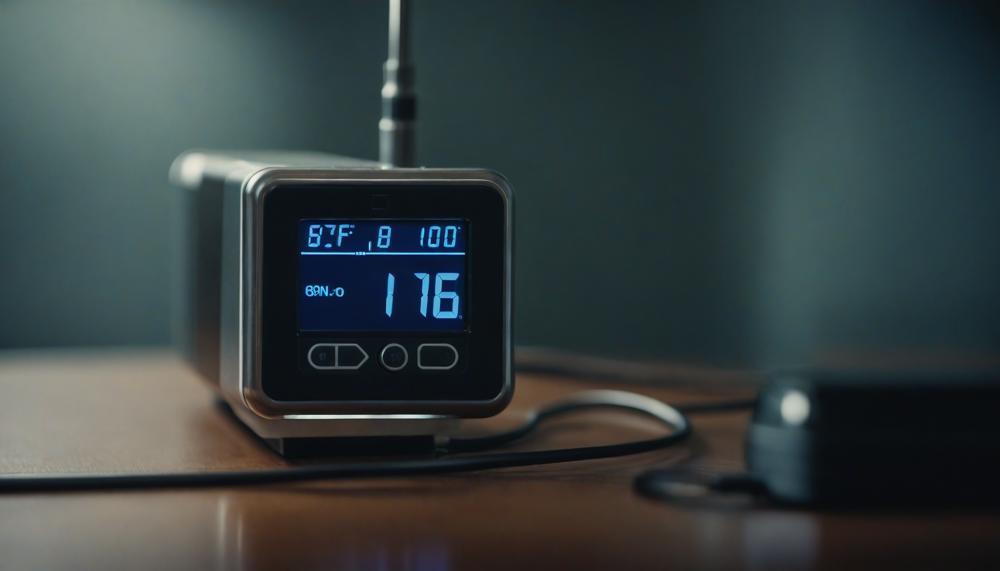
- Refer to your Traeger grill’s manual for specific calibration instructions as different models may vary.
- Navigate to the probe calibration settings on your Traeger grill. This step is critical to ensure your thermometer reads temperatures accurately.
Ice Bath Method:
-
Use the ice bath method to verify calibration:
Step 1: Fill a container with ice and add water until it’s slushy. Step 2: Insert the probe into the ice water without letting it touch the container. Step 3: Wait for a few seconds and check the thermometer reading. It should be 32 degrees Fahrenheit (0 degrees Celsius).
Replace Batteries Regularly:
- Ensure your thermometer has fresh batteries to maintain accurate readings.
- Replace batteries according to manufacturer recommendations or when the display appears dim or erratic.
Store Properly:
- Store your thermometer in a clean, dry place when not in use to prevent damage and extend its lifespan.
- Avoid exposing it to extreme temperatures or direct sunlight, which can affect its performance.
Monitor Probe Placement:
- Properly insert the probe into the thickest part of the meat without touching bone for accurate temperature readings.
- Use the clip or holder provided to secure the probe in place during cooking.
Following these practices will help you maintain the accuracy and reliability of your remote probe thermometer for Traeger grills, ensuring safe and enjoyable grilling experiences.
Troubleshooting Common Issues with Remote Probe Thermometers for Traeger
To troubleshoot common issues with your Traeger grill’s remote probe thermometer, follow these steps:
- Check probe connections: Ensure the probe is securely plugged into the controller port and inspect for any visible damage.
- Verify proper placement: Insert the probe into the thickest part of the meat, avoiding bones and fat, for accurate temperature readings.
- Test for accuracy: Conduct an ice water (32°F/0°C) and boiling water (212°F/100°C) test to ensure the thermometer displays correct temperatures.
- Clean and maintain probes: Regularly clean probes to prevent residue buildup that could affect performance.
- Replace faulty probes: If troubleshooting doesn’t resolve issues, consider replacing the probe with a new one from Traeger.
- Contact customer support: For persistent issues, reach out to Traeger’s customer support for further assistance.
Exploring Additional Features and Accessories for Enhancing Your Grilling Experience with a Remote Probe Thermometer for Traeger
| Feature/Accessory | Description | Benefits |
| Grill Baskets | Stainless steel baskets prevent food sticking, allowing even cooking without direct grate contact. | Enhances air circulation for crispy results; fits Traeger grills of various sizes. |
| Chimney Starter | Rapidly heats coals for quick grill setup, ensuring consistent heat distribution. | Speeds up grill preheating; reduces waiting time. |
| Grill Lights | Attachable LED lights with magnetic bases offer visibility for night grilling. | Improves safety and precision; adjustable designs fit different grill setups. |
| Drip Pans | Captures grease to prevent flare-ups and keeps your grill clean. | Eases cleanup; maintains grill longevity. |
| Spray Bottles | For spritzing meats during long cooks, maintaining moisture and enhancing flavor. | Keeps meat tender; adds depth to smoky flavors. |
Conclusion
To master your Traeger grilling experience, utilizing a remote probe thermometer is a game-changer, enhancing precision, convenience, and consistency. By allowing you to monitor internal temperatures without lifting the lid, this tool ensures your meats cook perfectly every time. Setting up and using a remote probe thermometer with your Traeger is straightforward:
Begin by preparing the thermometer, inserting batteries, and powering both units. Insert the probe into the thickest part of the meat, ensuring it’s securely connected to the transmitter placed outside the grill. Set your desired internal temperature on the receiver and monitor it as your Traeger works its magic. Adjust grill settings or remove meat once the desired temperature is reached to avoid overcooking.
Maintaining precise temperature control with a Traeger grill is crucial for achieving even cooking, retaining flavors, and ensuring food quality. Factors like pellet quality, grill settings, and weather conditions impact performance, making tools like remote probe thermometers invaluable. By following these steps and understanding temperature control essentials, you’ll elevate your grilling prowess effortlessly.

